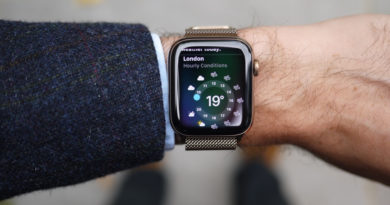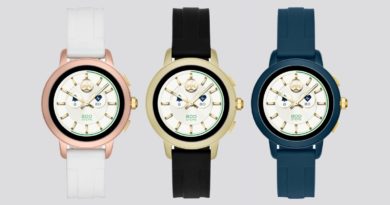Samsung Galaxy Fit v Fitbit Inspire HR: Affordable fitness trackers compared
![]()
If you’re in the market for a fitness tracker, the good news is that the two of the biggest names in the business now offer options that won’t break the bank.
The Samsung Galaxy Fit and the Fitbit Inspire HR are two solid devices that we’ve spent a fair amount of time getting to know.
Read next: Best cheap fitness trackersIf you don’t want to spend more than $100, they represent two of your best options right now. But how do they compare and which one gives your more for your money?
We’ve broken down the key differences and what you lose or gain if you choose Fitbit over Samsung or vice versa.
Got any burning questions about these two trackers? Let us know in the comments section below.
Samsung Galaxy FitFitbit Inspire HRWater resistance rating
5ATM (up to 50 metres)/swim tracking
5ATM (up to 50 metres)/swim tracking
Screen
0.95-inch AMOLED color touchscreen
1.4-inch OLED greyscale touchscreen
GPS
No GPS
No GPS
Automatic workout tracking
Yes
Yes
Heart rate monitor
PPG optical sensor
PPG optical sensor
Battery life
7 days
5 days
Compatibility
Android 5.0, iOS 10.0 or aboveAndroid 5.0, iOS 11 or above
Samsung Galaxy Fit v Fitbit Inspire HR: What are the differences?We’ve compared the models in detail to help you choose between them – read on to find out all of the key differences, from design through to price and fitness tracking.
Samsung Galaxy Fit v Fitbit Inspire HR: The designsLet’s start with the Galaxy Fit with its low-profile and sporty look that measures in at 11.2mm thick, making it a shade slimmer than the Fitbit Inspire HR. The Galaxy Fit also supports your pick of removable black, white or yellow soft silicone band options that hold the Fit’s polycarbonate core tracker in place. It also features a solitary physical button that can be tapped to take you back to the main watch screen and can be held down to launch a quick-start workout.Read this: Xiaomi Mi Band 4 v Mi Band 3The Fitbit Inspire HR, meanwhile, is very recognisably a Fitbit device – with its flush screen and low-key look. It also offers interchangeable bands and a design that channels its more premium relation, the Charge 3.
We do of course need to talk about screens here, which may be a big factor for you. The Fit has a color touchscreen display while Fitbit opts for a greyscale OLED screen. The difference is pretty big in terms of what you get here. With Samsung’s you’re getting a supremely bright, vibrant place to view your data and check in on the time. The Inspire HR’s screen is not low quality or difficult to read, but it lacks the same vibrancy you get on Samsung’s tracker. If you want a great screen, the Fit is the one for you.
From a waterproofing point of view, both have been slapped with the same 5ATM certification, which means you can take them in the shower and go for a swim with them too.
Neither of these trackers will pass for a wristwatch under a shirt cuff, needless to say – they’re obviously fitness trackers. The Galaxy Fit is probably the poppier of the two in the looks department, but there’s not a great deal to choose between them here. Samsung Galaxy Fit v Fitbit Inspire HR: Fitness trackingStep tracking compared: Fitbit Inspire HR (left) and Samsung Galaxy Fit (rightThe Galaxy Fit and Inspire HR come with a pretty similar range of fitness tracking features out of the box. Both track your steps and calories burned, and both have automatic workout detection for when you need to step it up a notch.
Both miss out on an altimeter, meaning that neither can track your stair-climbing exploits each day. They do track your sleep, though, and do a creditable job of it, too. Fitbit’s sleep tracking is some of the best around, and probably edges Samsung with the clarity of its presentation.
The headline inclusion on each tracker is the heart rate monitor – Fitbit even put it in the Inspire HR’s name. Both trackers are impressive at the price point, returning accurate data unless put under the high intensity test, though will likely to a decent job for most.
When it comes to reviewing your data, the experience on the wrist is largely the same for both. When you want to dig deeper and need to head into the respective companion smartphone apps, there’s a much bigger divide. Fitbit’s app is clean and easy to use, Samsung’s isn’t. It’s not an absolute mess, but it could definitely do with some streamlining and not make you jump through a lot of screens to find what you need.
Sports watches and fitness trackers are distinctly different, and though both the Galaxy Fit and Inspire HR feature some sports tracking features, neither can adequately replace a purpose-made sports watch. They miss out on having GPS, for example, so you’ll be relying on your phone’s data there.
Samsung Galaxy Fit v Fitbit Inspire HR: Smartwatch featuresNeither the Galaxy Fit nor the Inspire HR is going to blow your socks off when it comes to smartwatch features – the screen real estate and processing power just isn’t there. But both make an effort to offer some nice bonus features in this vein.
Essential reading: Best cheap smartwatches to buyBoth can show notifications (or snippets of notifications) from your smartphone, though you won’t be able to respond through the trackers. You also sadly can’t control your music or make payments using the devices.
Both trackers also allow you to choose your preferred display and watch face, though the Inspire HR only offers nine to choose from. Samsung has a bit more of a range to choose from, along with the benefit of a color display. If you’re looking for extensive smartwatch features, you might have to splash out a little more cash, but the Galaxy Fit and Inspire HR do what they can, with the Fit just doing that little bit more.
Samsung Galaxy Fit v Fitbit Inspire HR: Battery life and priceFitbit has a deserved reputation for great battery life, but on this occasion is actually pipped to the post by the Galaxy Fit. Samsung says you’ll get seven days of use from the tracker, and even under strain with high brightness levels, we found this to be an accurate estimate in our testing.
The Inspire HR boasts five days of life, in contrast, but also reaches that level reliably. Both trackers could potentially eke out some more time if you were to turn features off, too, so you won’t be reaching for a charger every night.
On the cost front, the Galaxy Fit clocks in at $99, while the Fitbit Inspire HR costs $99, so they’re really pace-for-pace on price. Samsung Galaxy Fit v Fitbit Inspire HR: Which fitness tracker is best?These are two impressive fitness trackers, so you’ll be making a good purchase either way. For our money, though, there are two main considerations to make, given the similar features on offer.
Firstly, in terms of design and use, the Galaxy Fit is probably ahead – it’s got a more distinctive and slightly more expensive look to it a better screen, and a slightly (very slightly) wider range of features for you to try.
Secondly, though, the Fitbit Inspire HR claws back most of that ground when it comes to its companion software. Fitbit’s tracking app is great, with straightforward layouts and clear data. The Galaxy Fit, meanwhile, requires you to download fully four different apps to your smartphone to use its range of features. That’s not what we’d call a streamlined experience, and can get annoying day to day.
We’d say that the choice you make might just come down to what’s likely to be more important to you – if you like the design of one of these trackers particularly, that’ll be the one for you. If you like to pore over your data and work out trends, Fitbit’s probably got the edge, but on the design of the tracker alone, Samsung takes it.


